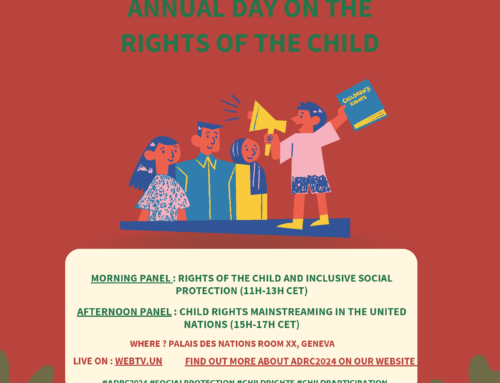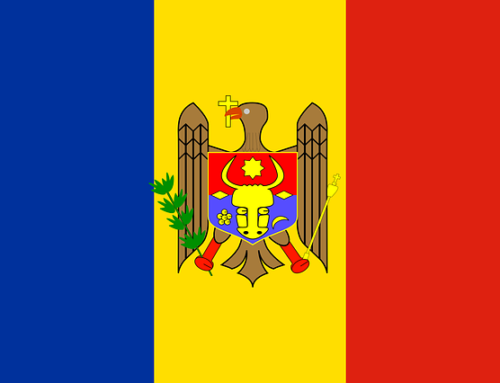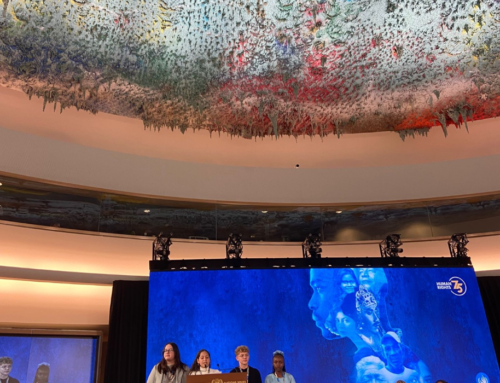On Wednesday 24th March, the UN Committee on the Rights of the Child (the Committee) officially launched their new General Comment No. 25 on children’s rights in relation to the digital environment taking into consideration some key asks and recommendations by Child Rights Connect which focused on CHRDs’ rights in the digital space. The General Comment sets out how the UN Convention on the Rights of the Child applies in the digital world and is the first international authoritative legal document recognising explicitly that children’s rights apply both offline and online.
The adopted General Comment and incorporation of some of Child Rights Connect asks
Recognising children’s active engagement with the digital environment and this space as an enabler of communication and collaboration among CHRDs
We welcome the addition of “child-led groups” among the actors States parties should systematically involve in the development, implementation, monitoring and evaluation of laws, policies, plans and programmes relating to children’s rights (para. 34). Children occupy the digital space along with adults and therefore, as active users, they should be involved in said processes. Furthermore, for CHRDs the digital environment provides unique opportunities to exercise their rights. Digital technologies enable them to communicate and collaborate with other defenders, to learn from each other and to access the necessary information they need to promote and protect human rights.
We are also happy to see that the Committee considered our recommendation to include “the ways in which children exercise their rights in the digital environment” in paragraph 33 as one of the aspects or topics to be included in the trainings for professionals working for and with children and the business sector.
Taking advantage of the digital environment as an effective platform to disseminate the work of CHRDs
Child Rights Connect highly welcomes some of the new additions in relation to freedom of association and peaceful assembly in paragraph 66, which now reads as follows: “(…) The Committee recognizes that the digital environment enables children, including children human rights defenders, as well as children in vulnerable situations, to communicate with each other, advocate for their rights and form associations. States parties should support them, including by facilitating the creation of specific digital spaces, and ensure their safety.”
Regarding freedom of expression, we celebrate the inclusion in paragraph 59 of “transparent” and “communicated to children in age-appropriate language” as additional requirements for restrictions on freedom of expression. Likewise, we appreciate the decision of the Committee to add “training opportunities” in that same paragraph regarding States’ obligations. Thus, States should not only provide with information but also with “training opportunities” on how to effectively exercise the right to freedom of expression, in particular on how to create and share digital content “safely”.
The digital environment allows CHRDs to disseminate their work as they reach wider audiences without requiring significant financial resources, often limited for them or their organisations. However, and, as highlighted in our submission to the Committee, more training opportunities are needed to support CHRDs to make the most out of the digital environment and take advantage of its possibilities to protect and promote human rights.
Promoting greater support from adults to secure full participation of children
We are glad to see that the Committee considered our recommendation concerning the best interests of the child. As stated in paragraph 13, in considering the best interests of the child, States parties “should have regard for all children’s rights, including their rights to seek, receive and impart information, to be protected from harm and to have their views given due weight.”
Adults, as CHRD have emphasised, have an instrumental role for them to exercise their right to participation in the digital environment. CHRDs need greater support by different relevant adults. Such support comes in the form of stronger legislation, policies and regulations by Governments, more direct support from parents and guardians, as well as teachers and schools’ staff.
Vulnerable groups of children
Finally, in relation to girls, it is worth noting that the Committee, in line with our recommendations, made specific reference to the barriers and challenges faced by them when exercising their rights in the digital environment. Therefore, we very much welcome the addition in paragraph 11 of the following sentence: “Specific measures will be required to close the gender-related digital divide for girls and to ensure that particular attention is given to access, digital literacy, privacy and online safety.”
In relation to children with disabilities, we also welcome the inclusion in paragraph 89 of the obligation for State parties to “adopt measures to prevent the creation of new barriers and remove the existing barriers” faced by children with disabilities in relation to the digital environment.
Background and Child Rights Connect’ submission to the Committee
In November 2020, Child Rights Connect, members and partners made a joint focused submission to the draft General Comment of the UN CRC on children’s rights in relation to the digital environment which had a special focus on how CHRD use and engage with the digital environment. The joint submission was directly informed by children all over the world, more specifically, by more than 35 children, aged 13 to 18 years old, from 15 countries in all regions of the world, who use the digital environment to act as human rights defenders. The views were collected as a part of a study exploring in-depth the issues raised by CHRDs related to the digital environment as a part of the global consultation for the Committee’s Day of General Discussion in 2018. For more information, you can read our previous news piece on the joint submission here.
During its 86th session, the Committee adopted the General Comment No. 25 on children’s rights in relation to the digital environment. This General Comment sets out how the UN Convention on the Rights of the Child applies in the digital world. Indeed, it is the first international authoritative legal document recognising explicitly that children’s rights apply both offline and online.









